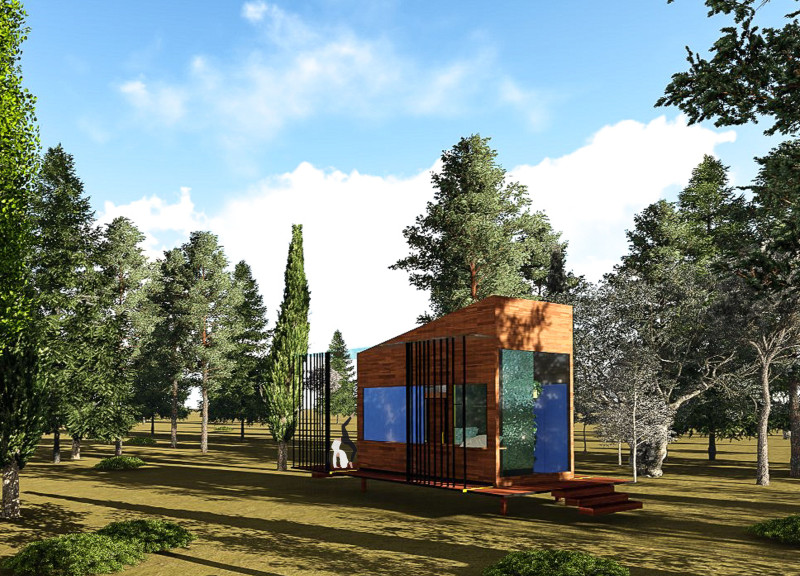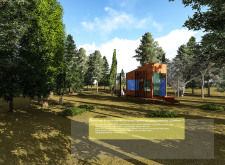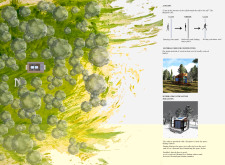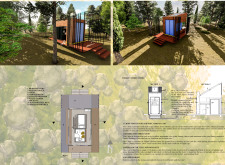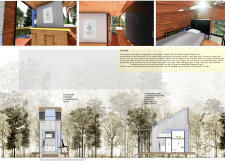5 key facts about this project
The cabin is designed to promote self-reflection and a strong connection with nature. Located in a serene landscape, it encourages activities such as yoga and meditation. The design emphasizes functionality while drawing inspiration from themes of personal exploration. Adaptability to local climate conditions ensures that the cabin remains usable throughout the year, enhancing its relationship with the environment.
Integration with Nature
The design incorporates natural elements effectively. A fireplace serves as the main heat source during winter months, while snow that accumulates on the roof provides insulation. Double-glazed glass reduces heat loss in winter and limits heat gain in summer, reflecting a focus on energy efficiency.
Energy Conservation Techniques
This approach employs practical energy conservation strategies that enhance comfort for occupants. Heat is harnessed through double-glazed glass, where it is absorbed by a surface located behind the chimney. Hot air rises and escapes through louvres at the chimney's top, while cooler air enters through floor-level vents, maintaining a consistent interior climate.
Interior Layout and Utility
The interior reflects a thoughtful arrangement that prioritizes utility and harmony with the natural surroundings. The eastern side of the cabin has sliding doors, creating a semi-open area suitable for yoga and relaxation sessions. A sliding window on the western side, paired with a foldable bench, establishes a comfortable nook for reading. An elevated bed, located above the kitchenette, increases usable floor space while allowing for flexibility in the layout.
Natural Light and Sustainable Energy
The cabin’s roof is tilted at an angle to accommodate photovoltaic cells that generate electricity for lighting and heating water. Skylights placed in the bedroom and bathroom help capture natural light, creating a direct connection with the outdoors. This not only improves energy efficiency but also enhances the atmosphere within the cabin, making it inviting for those who occupy it.
The design culminates with a blend of indoor and outdoor spaces, especially in the northern area where a glass shade extends to an outdoor deck, offering a space ideal for yoga practice while surrounded by nature.


